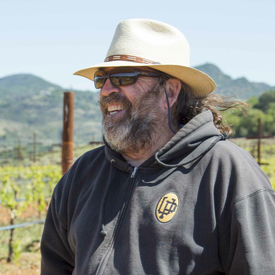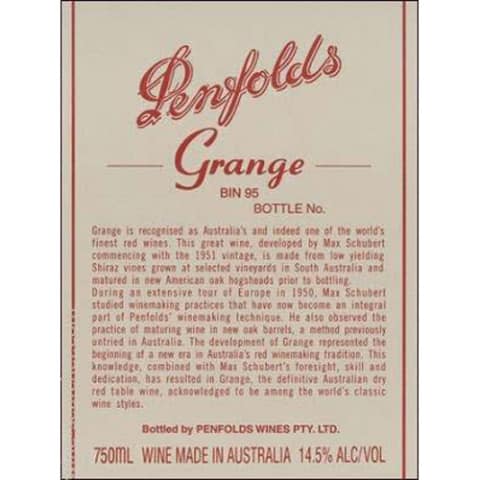In 1990, two momentous events changed South Africa in ways that are still being felt today: Nelson Mandela was released from his prison on Robben Island, setting a new course for the beleaguered nation and Apartheid was abolished, freeing the people from its grip and opening the country's economy.
Less known, but important to wine drinkers around the world, was the lifting of international sanctions, allowing the struggling South Africa (SA) wine industry to recover its potential. Outdated vineyard and winery equipment were replaced, winemakers began traveling again to learn the latest innovations in wine making and the opportunity to rejoin the international wine fraternity. The worldwide wine community took notice that the nearly South Africa moribund export wine market began to show new life.
Great Britain had long been South Africa's major export market. Before the early 1990s, if you wanted to see what SA's small wineries had to offer, London was the place to go. Except for the odd bottle of Steen (the local name for Chenin Blanc) and an odd red called Pinotage, there were few SA wines in American wine shops.
Aside: Perhaps no other wine, that I can think of, was met with such negativism outside its country of origin, than South Africa's Pinotage. Developed in 1924 at Stellenbosch University as a cross of Pinot Noir and Cinsault, the first rustic reds were slightly bitter and smelled and tasted of acetate.
For years, Pinotage was controversial and a hard sell outside South Africa, but with advances in grape growing and wine making, the rough edges were smoothed out and many Pinotages, such as those from Kanonkop, began to show clean fruit flavors, no bitterness, a little refinement and the ability to age.
For some wine drinkers, mainly those who remember the old style Pinotage, the signature South Africa red is not yet out of the woods, but many SA wineries are working on it.
My first trip to South Africa was in 1995, when the SA wine industry was working hard to get back in the game. Some vineyards I saw looked ragged and didn't have the orderly well-tended appearance of vineyards in California, Australia and Europe. Wineries were suffering as well, lacking the funds to buy the latest stainless steel tanks, pneumatic presses and Italian bottling lines.
Wherever I went, the winery owner tried to impress me with a re-styled Pinotage when it was Pinot Noir I was after. It was like being handed a glass of Carignane in California when all I wanted was to taste their Cabernet Sauvignon or Merlot.
Regions, Grapes and Winemaking
Cape Winelands major wine zones are roughly divided into four major regions: South Coast; Coastal Region, the core of Cape wine making; Klein Karoo, Northern Cape and the Breede River Valley.
The focus of this overview of Cape wines will be the districts within the Coastal Region, home to South Africa's most recognizable wine districts: Stellenbosch, Paarl, Constantia and Franschhoek.
In SA wine terminology, the breakout is Region, District and Ward. This bit of seeming trivia can be useful when shopping for SA wines, much the same way as reading a California wine label showing region, winery and vineyard: Napa Valley, Acme Winery, Paramount Vineyard.
Stylistically, South African wines have been described as between European and California or Australian. To my taste, the wines are less ripe than California and some Australian and earthier than many European wines.
Franschhoek (Frans-huk) is a major area and home to some of SA's oldest wineries. The area was settled by French Huguenots in the 17th century; the name means "French Corner." An early name for the area is "Oliphants hoek" (elephants corner) for the large herds of elephants that once roamed the valley.
Franschhoek is one of the loveliest spots in the Western Cape, with the valley nestled between the Drakenstein and Franschhoek Mountains.
Major varieties: Chenin Blanc, Cabernet Sauvignon, Chardonnay, plus some Shiraz and Sauvignon Blanc.
Franschhoek wineries: La Motte, Boschendal, Franschhoek Vineyards.
| Cape architecture |
Stellenbosch is a university town, along the Eerste River. The large district has more than 80 wineries, the most by far in the Western Cape.
Stellenbosch wineries make a wide range of wines, including the sparkling Cap Classique. More than any variety, Stellenbosch is identified with Chenin Blanc and there is far more planted in South Africa than in France's Loire Valley. Called "Steen" by the first settlers, the wine became popular, thanks in large part to Stellenbosch Farmers Winery, for its sweet Steen.
Stellenbosch winemakers were at the forefront of those making Shiraz, often grown as a bush vine and aged both in American oak and French oak. Those opting for French oak, prefer the marriage of Pinotage sweet fruit and spice of French oak.
Major Varieties: Chardonnay, Sauvignon Blanc, Pinotage, Cabernet Sauvignon, Shiraz.
Stellenbosch wineries: Neal Ellis, Kanonkop, La Bonheur, Meerlust, Rustenberg, Mulderbosch.
| Paarl wine region in shadow of Drakenstein mountains |
Paarl is an important inland district, mainly for its growing number of wineries, but also for its dependence on grapes from other districts like Stellenbosch. KWV is the biggest winery in Paarl, and maybe in all of South Africa. Paarl is a warm area, with the best wines coming from vineyards at higher altitudes, thus the reputation that Paarl has for fortified wines, like port-style wines made from the Souzao grape. In recent years, Paarl has transitioned from mainly white to mainly red wine.
Major varieties: Chardonnay, Chenin Blanc, Merlot, Pinotage
Paarl wineries: Glen Carlou, KWV, Fairview, Simonsvlei
Constantia has a colorful history stretching back to the 17th century when the Constantia estate was established. Today, three wineries carry the Constantia name. In the early years, the Constantia wines was made from Muscat de Frontignan, Muscadel and Chenin Blanc
Major varieties: Sauvignon Blanc, Semillon, Chardonnay, Riesling, Cabernet Sauvignon
Constantia wineries: Constantia Ultsig, Groot Constantia, Klein Constantia
South African wines may require a search, but it's worth the effort for their unique styles, high quality and good value.
Gesondheid!
Next blog: Sonoma Series: Carneros & Other Appellations
Write me at boydvino707@gmail.com



